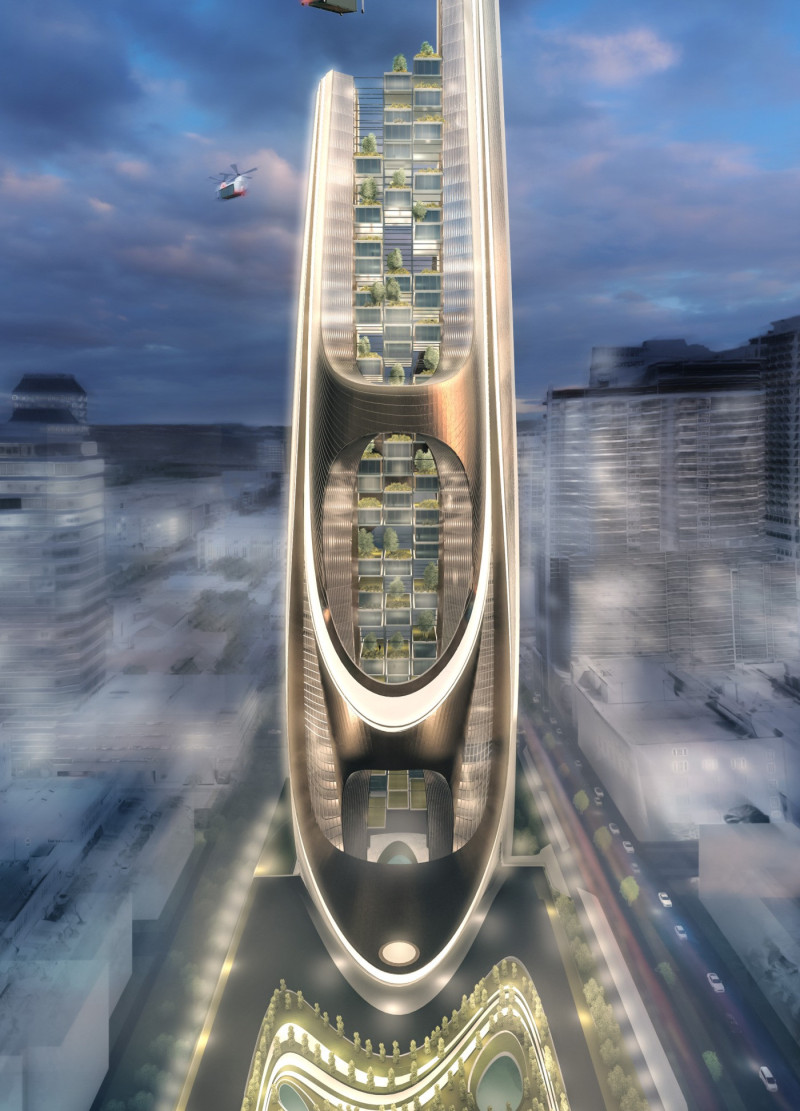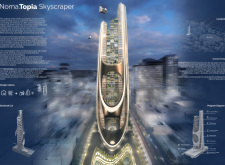5 key facts about this project
Noma.Topia Skyscraper is a notable architectural response to the changes in urban living and working, particularly following the COVID-19 pandemic. Set in Lake Eola, Orlando, Florida, the structure blends both residential and commercial functions. The design focuses on creating a cohesive living environment that serves the needs of its users, rethinking how spaces for work and home can coexist effectively.
Concept Integration
The main idea of Noma.Topia revolves around combining mobile housing with garden units designed for social interaction within office spaces. This approach emphasizes flexibility, allowing the housing units to be relocated or removed based on the needs of the occupants. It shows an awareness of the changing lifestyle preferences of people, aiming to create an environment that supports both work and personal well-being.
Spatial Organization
The layout of the building is carefully planned to enhance social connections and promote overall well-being. Green spaces are interwoven throughout living and working areas, highlighting how nature can play a role in daily life. By incorporating elements of biophilic design, the structure creates a setting that is not only functional but also nurturing and supportive for its users.
Aesthetic Duality
Noma.Topia’s visual style is defined by two design approaches. One is modern-minimalistic, which reflects the practical aspects of movable structures. The other is fluid design, which imagines the future of high-rise buildings. This combination results in a varied visual identity that allows for a flexible and adaptable building suited to urban needs.
Geographical Context
Located in a growing urban center, Noma.Topia benefits from the vibrant atmosphere of Orlando. The area is known for its technological growth and cultural diversity, making this site suitable for exploring new ways of living and working. The project seeks to address the needs of a community that values adaptability and connection in an ever-evolving city.
At the heart of Noma.Topia is a clear vision of how living and working can be intertwined. Open-air social garden units invite users to experience nature while engaging in professional activities, enhancing the relationship between different aspects of life within a modern urban setting.



















































